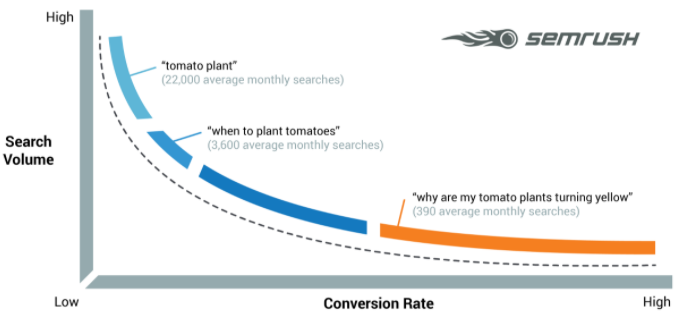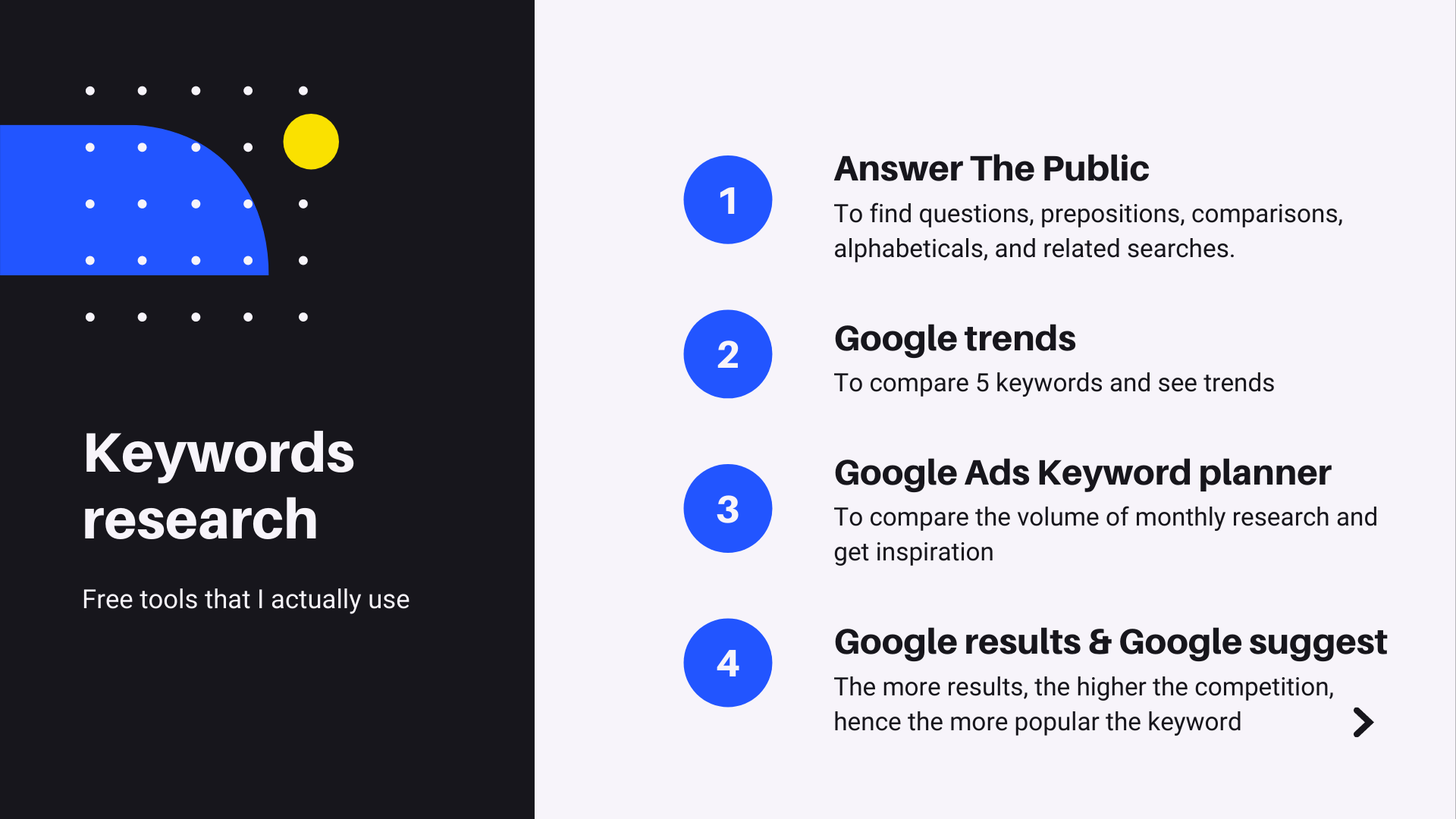Getting Into the SEO Mindset with Entrepreneurs of Finland (1/3)

I had the fantastic opportunity to present a webinar with Entrepreneurs of Finland in November 2020 about Boosting Your Website Traffic with SEO. Something that I love about Entrepreneurs of Finland is that they put an emphasis on the idea that everyone has a unique story, especially entrepreneurs, and so this was an awesome chance for me to not only share my expertise in SEO with other business owners, but I was also grateful for the opportunity to share my story while networking and connecting with such a cool group. Throughout the webinar, there were a lot of deep, insightful questions and follow-up, and I truly appreciated all the participation!
The enthusiasm for this content was so inspiring that I wanted to create a follow-up blog to use and share as a reference point. In this three part series we’ll review the pillars of a SEO strategy and give a deeper overview of each pillar. In this first article of the series, we’ll be getting deep into the first pillar: keywords!
Mind over matter
As the founder of Frankr and a solo entrepreneur myself, I’ve made it my mission to help other startup founders and biz dreamers get more qualified traffic to their website to help build their business by using SEO. I have over 10 years of experience with Search Engine Optimization, and my journey in the SEO world actually began at a web agency working on high volume websites with large amounts of traffic. For much of that time, I was surrounded by tech guys, and during this experience, learned to approach SEO in a very technical and automated way. I like to share this story because my background is actually 100% not technical, and really is the complete opposite of a technical background, so I think it’s helpful to highlight that you don’t need a technical background to get started with SEO.
My intentions I brought to the webinar were all about mindset and practical tools that can be used right away. The biggest goals I hope to bring to any solopreneur about their SEO strategy is to one, emphasize that you don’t need technical training to implement SEO! It is more a mindset than a technical framework, as the SEO implementation really relies on your mindset. And two, that all the SEO tricks utilized for your bigger SEO implementation, can also be efficient for smaller projects. SEO has the potential to be super beneficial in numerous ways.

Content strategy
The blueprint and the questions
Content is king and SEO is a way to get FREE traffic from Google! So as a solopreneur, you need to use SEO to help build your business! In my everyday work, I hope to bring out the relevance of this idea. I really love to see new solo entrepreneurs put a lot of focus on their content strategy — this is not about backlinking — but truly about the nitty gritty of ensuring your content is helping boost your web traffic. A great way to get into the SEO mindset, is to start by assessing the foundation of Search Engine Optimization as well as asking yourself a few questions.
Let’s start with the 3 pillars of seo
1. Keywords
The more the merrier! Generic keywords vs. long-tail keywords. Choosing Understandability over originality.
2. Architecture of the website
Detailed articulation. Mirroring your Sections. (Pro-tip: the SEO mindset is REALLY utilized here).
3. The technical implementations
URL Rewriting. Crawlable content. (This part is actually extra important, you may even want to consider it the backbone of your SEO strategy! If the technical implementations are done incorrectly, then all the energy you’ve put into the first two stages is wasted).
Are you content with your content?
During the webinar, I went over some questions you can ask yourself to help put you in the SEO mindset mood and find out if your content strategy is serving you in the best possible way (i.e. is bringing you more qualified traffic) :
Do you invest a fair amount of time in benchmarking your competition?
Do you benchmark specifically for your competition on Google?
Do you know how much content you have, or how many pages roughly?
How much content do I need?
Pro-tip: It’s all relative! The goal of these questions is to help identify that your SEO strategy starts with assessing your competition’s marketing efforts on Google. I can’t emphasize enough how important this is! Comparing your SEO efforts with your competitor’s content strategy is key to a successful SEO implementation.
A focus on the first pillar
The strategy to ramp up your content, or, being a user-centric maniac!
Maybe the biggest pro-tip I can offer is that in order to ramp up your content, it’s all about being a user-centric maniac, instead of being like a robot with automated tricks. Think of it this way, you have this product, it’s yours and you care a lot about it, and you’re very used to pitching your product the very same way over and over. You may already have in your mind, consciously or subconsciously, who your user is and what they will use the product for. The drill now is to destroy that thought process in order to allow your perspective and point of view to see ALL your prospects. You want to be able to see ALL your users differences and ALL the different reasons users may be interested in your product or service. You need to embrace ALL the different reasons people may want your product.
One of your biggest roles as a solo entrepreneur, is to open your product and service up to possibility. As business owners, we need to be less self-centered and think outside of ourselves and outside of the one reason we may imagine users may wish to use our product or service. Going into your SEO strategy with a user-centric mindset is the best way to deploy a long-tail keyword strategy as it allows you to go down the keyword rabbit hole in search of all keywords that may be applicable, not just the generic ones.
The long-tail SEO strategy is extremely specific keywords that are searched once or twice a month. Long-tail is usually 5 keywords or more, and is a more articulated and complex search a user is making. Remember, the old adage in regard to keywords is the more the merrier.

While this may seem counter-productive at first, it’s actually very beneficial for you as it gives you the opportunity to be highly visible for super specific, (and maybe not as competitive), but very relevant keywords. When your business is new, it can be challenging to be visible with only the generic and popular queries associated with your product or service. When developing your SEO strategy, you’ll want to have your list of generic keywords, but in order to complete your keyword strategy you really want to dig deep and expand that out with long-tail keywords as well.

P.S. My dear google.com and page one on Google is really my fave place to get keyword ideas while creating an SEO strategy. Once I type something, I immediately get an idea of the number of results and number of competitions. I can go down to the bottom of the page and see other searches related to my query. This is a great space for new cool ideas, and a place to get inspired about my long-tail strategy.

You could call it a dreamer’s mindset
Benchmarking with your competition and starting with your keywords can really help you get into an SEO mindset. It’s almost as if the keywords themselves can be grounding, rooting you into the base of what your business is and the dreams you have for yourself as a business owner. Identifying your generic and long-tail keywords helps you become more user-centric, which will lead you more naturally into addressing the architecture of your website as well as the technical implementations, where the SEO mindset is extremely important. My wish is that my pro-tips can be helpful for others on their entrepreneurial journey and I’m so excited for orgs like Entrepreneurs of Finland that give us a place to connect and build our businesses together.
Stay tuned for the upcoming articles in this series that will cover the architecture of your website and the technical implementations. Spoiler alert: there will be plenty of pro-tips ahead!
